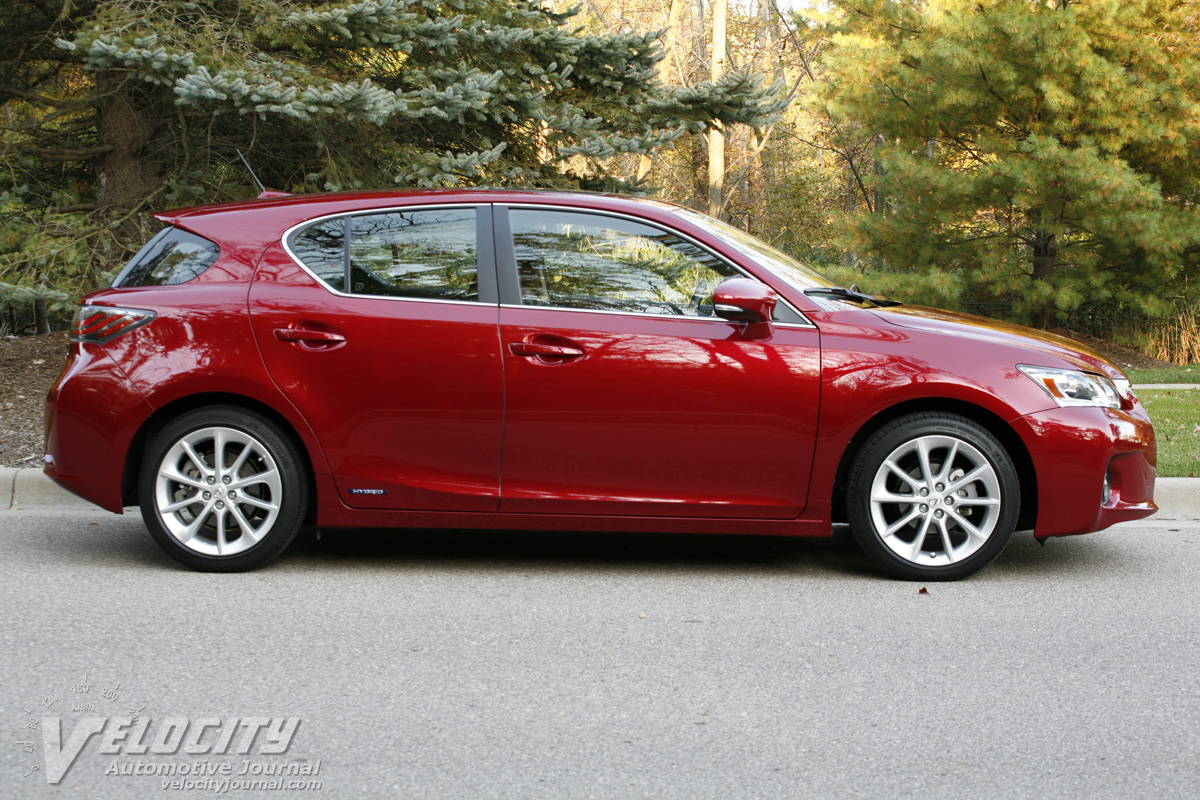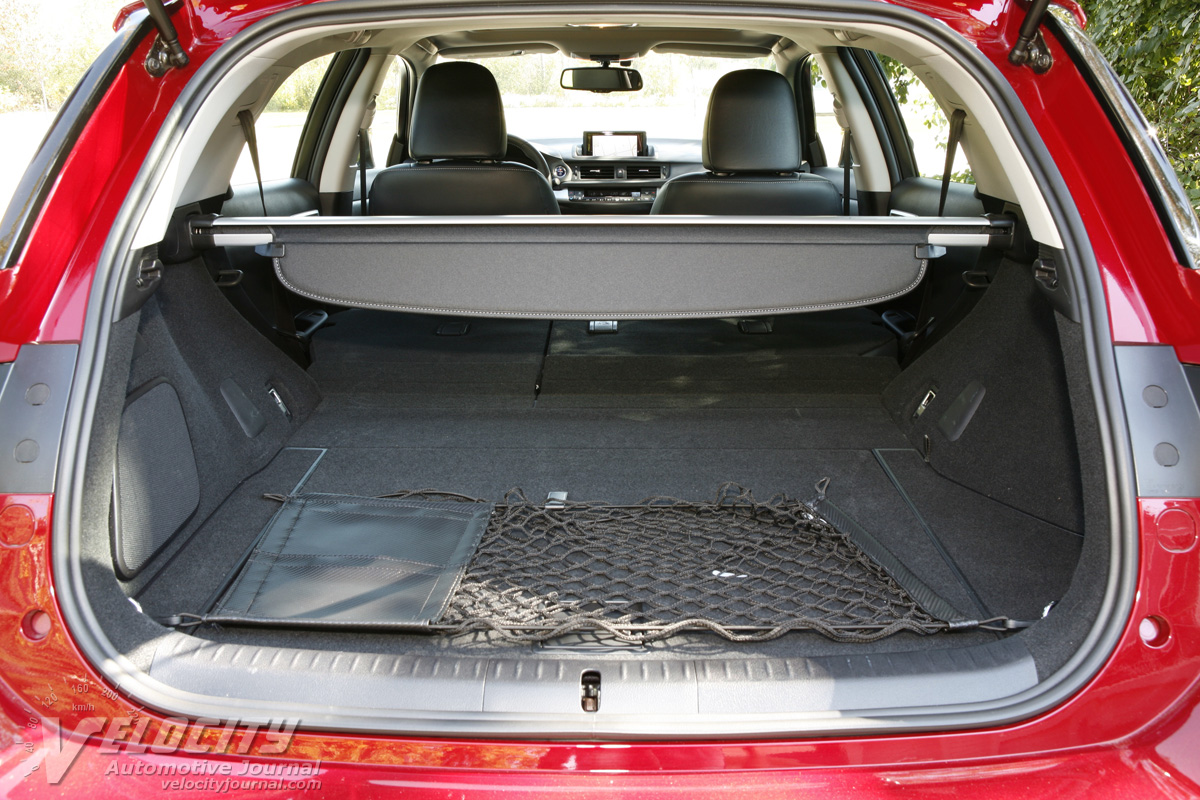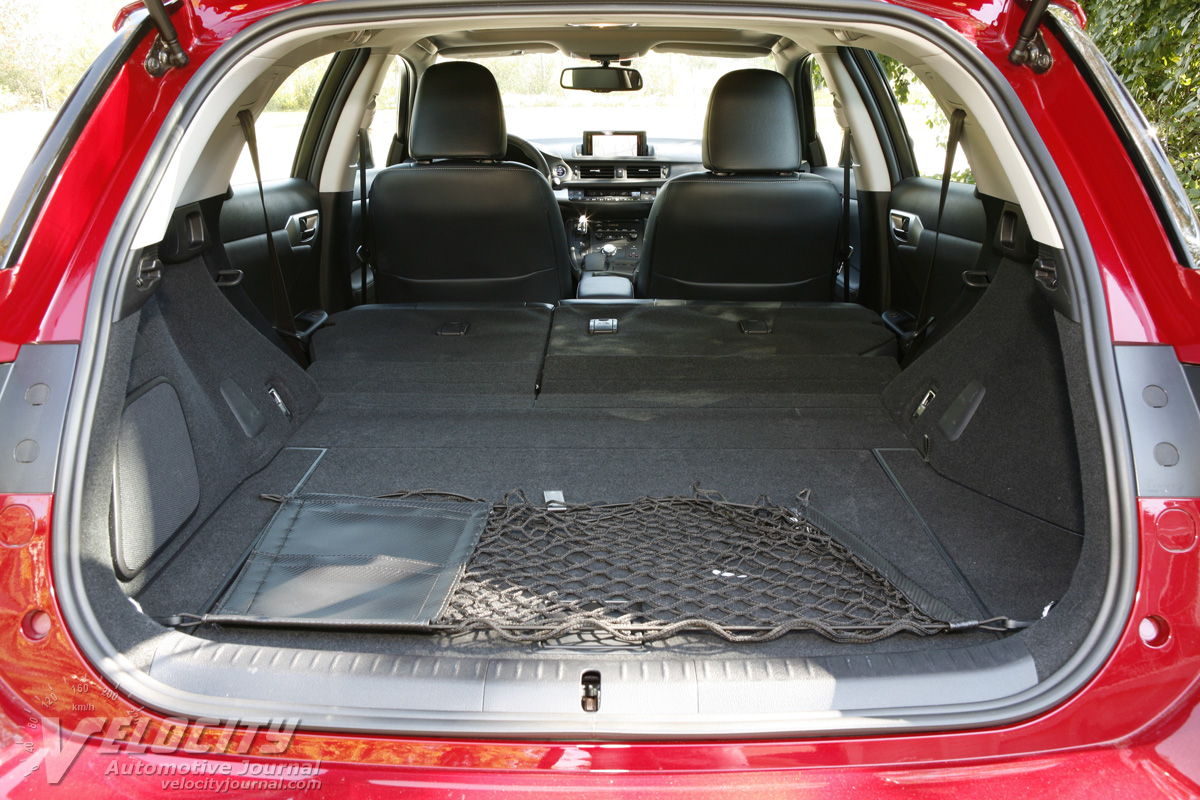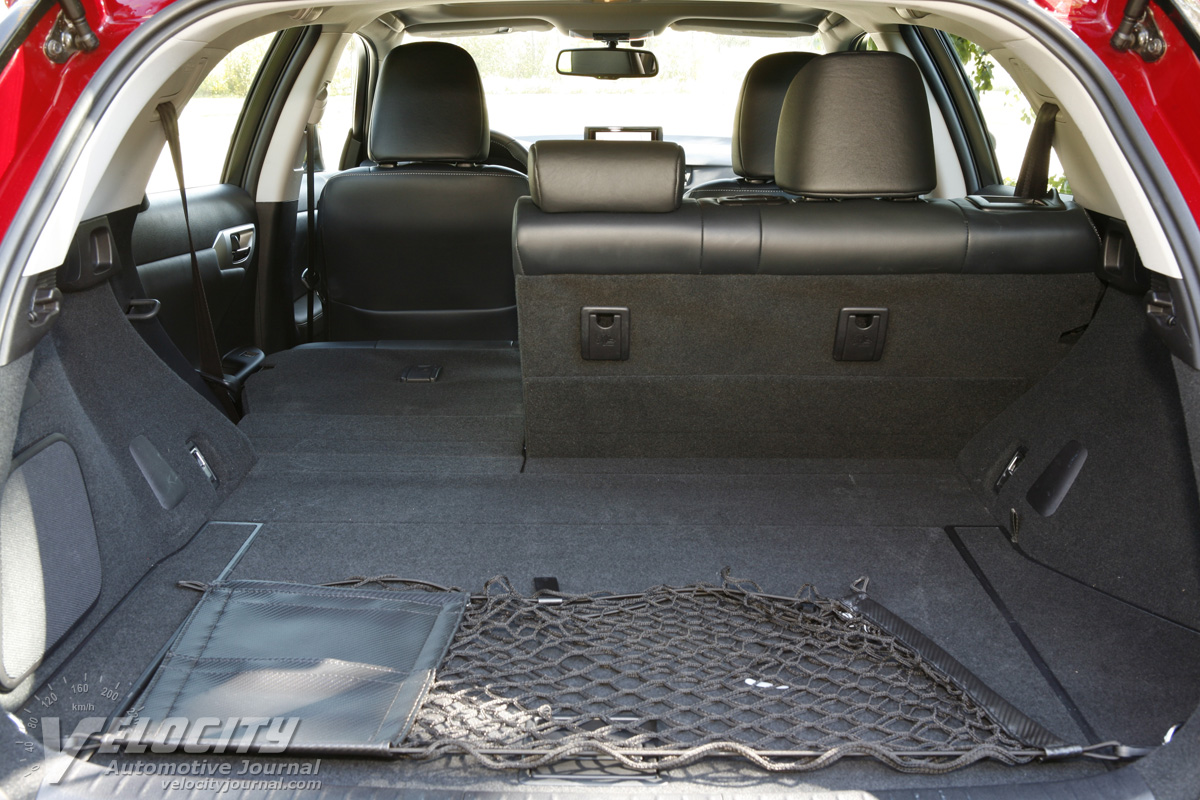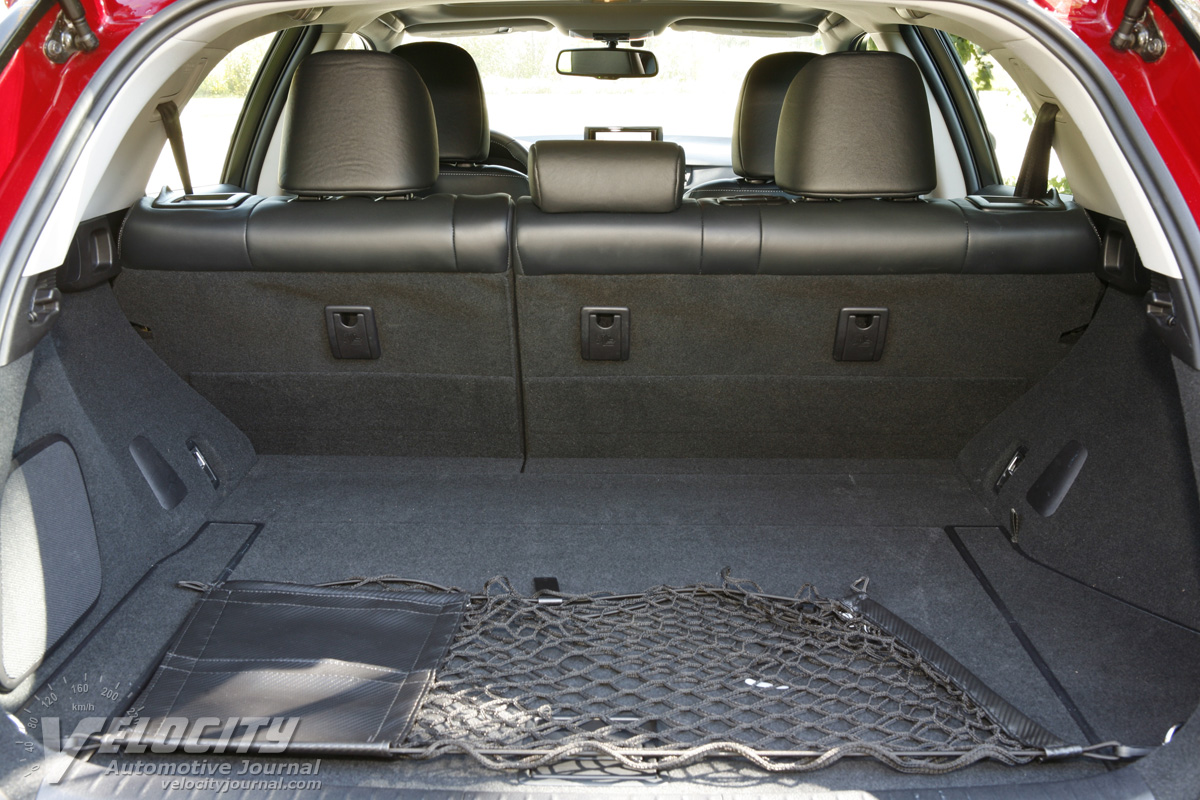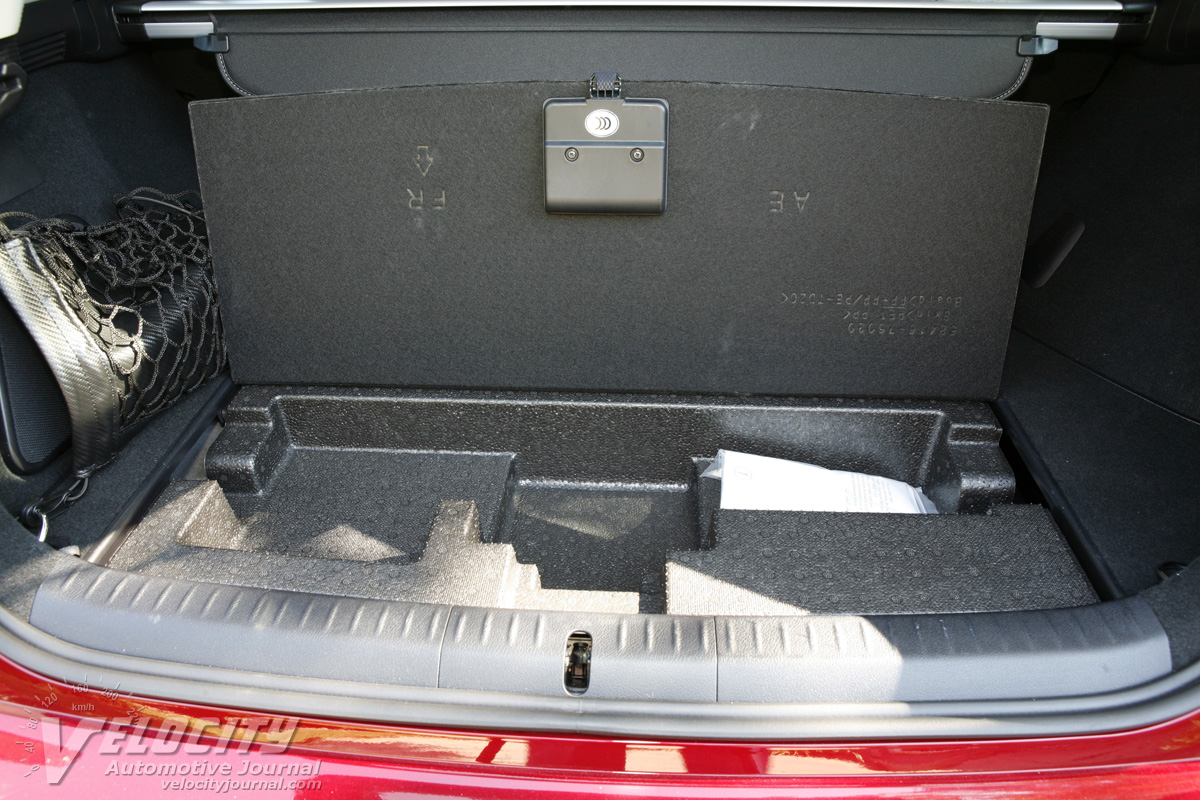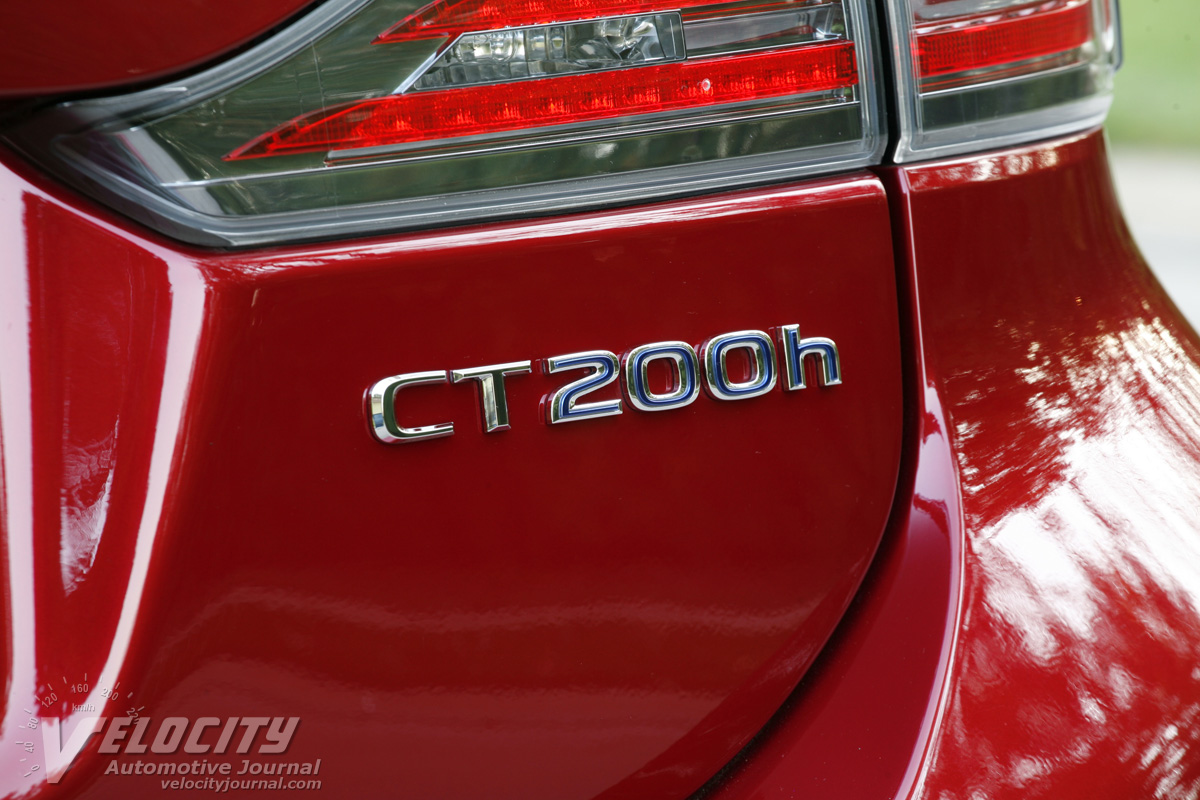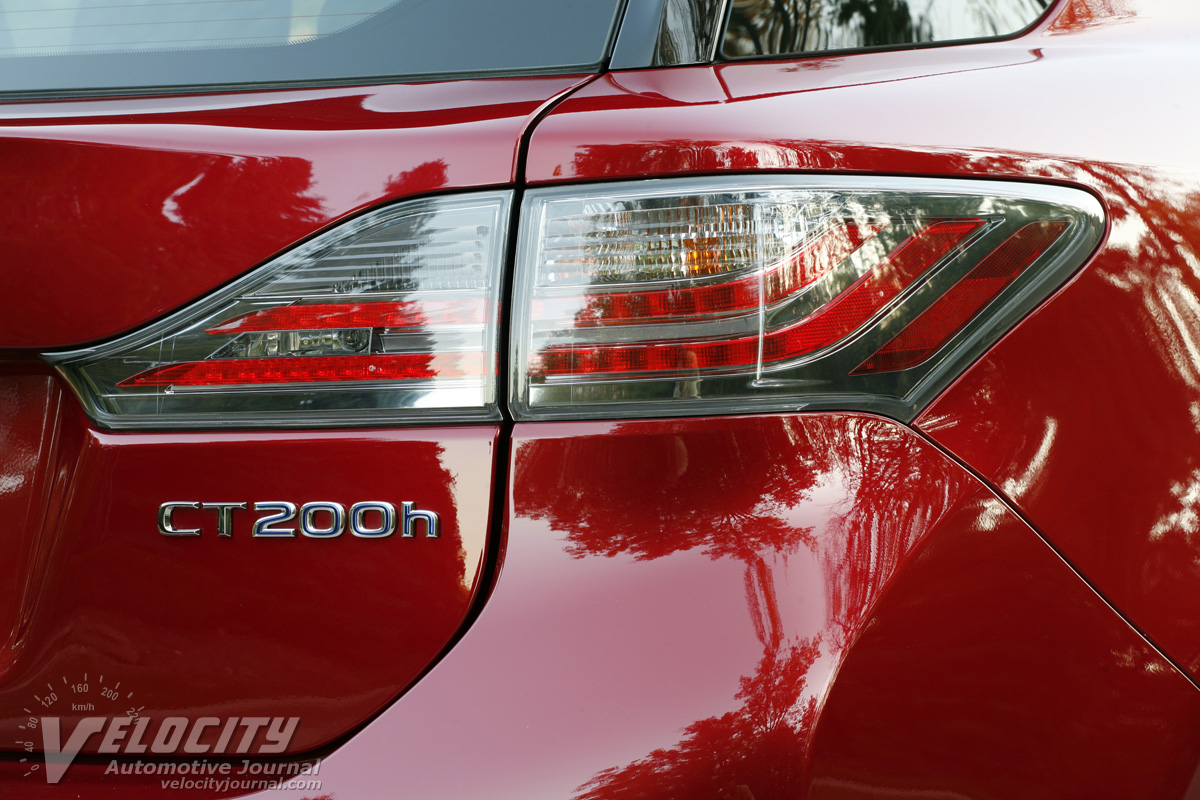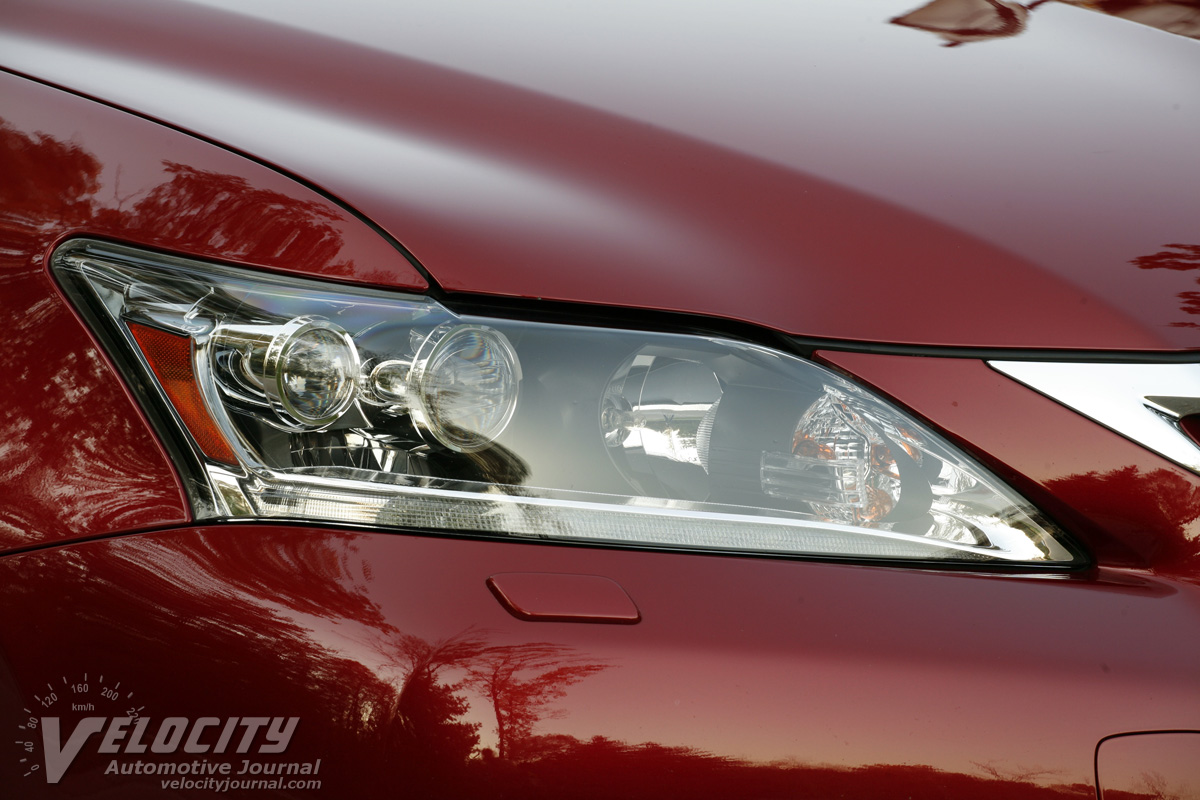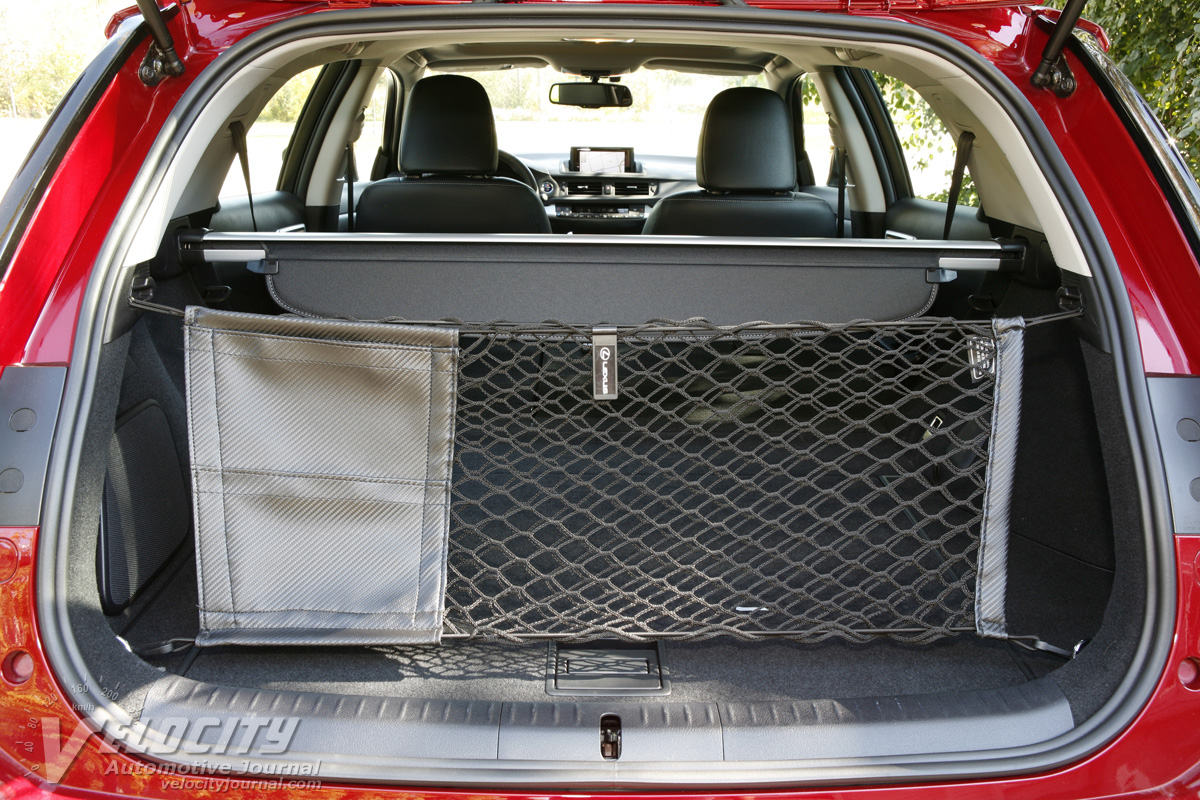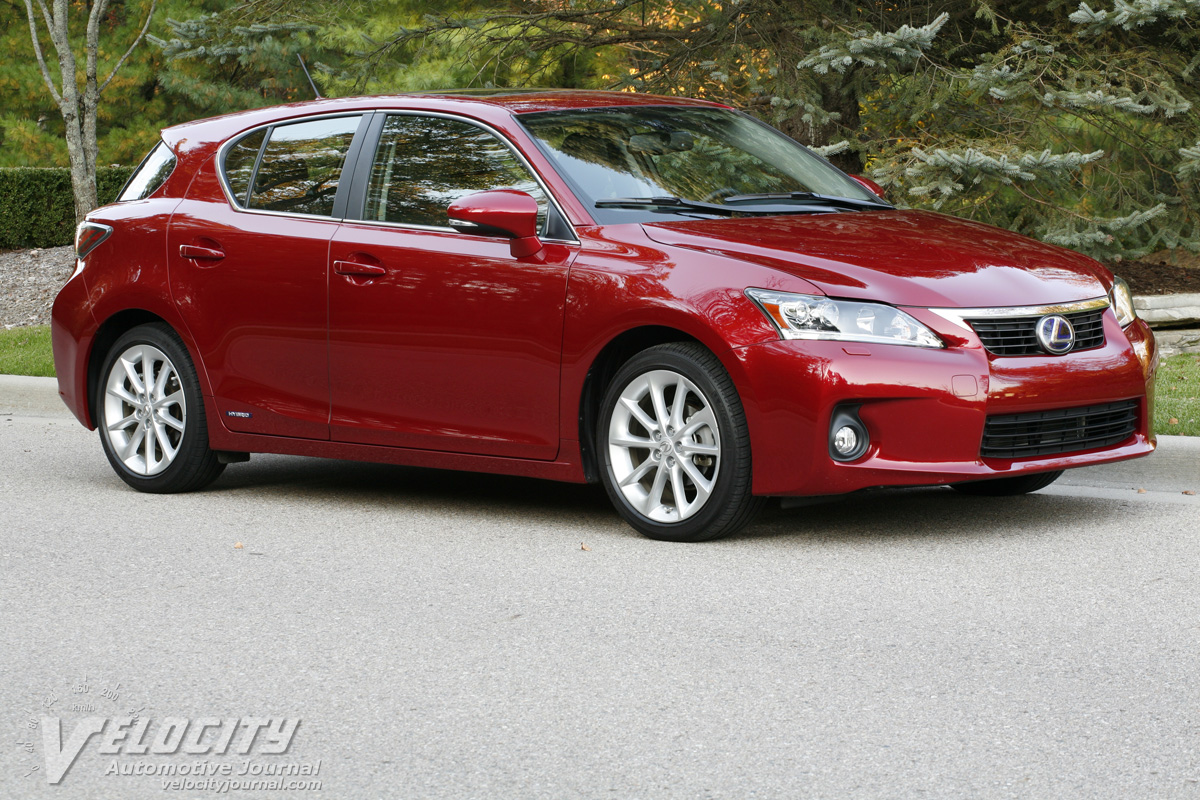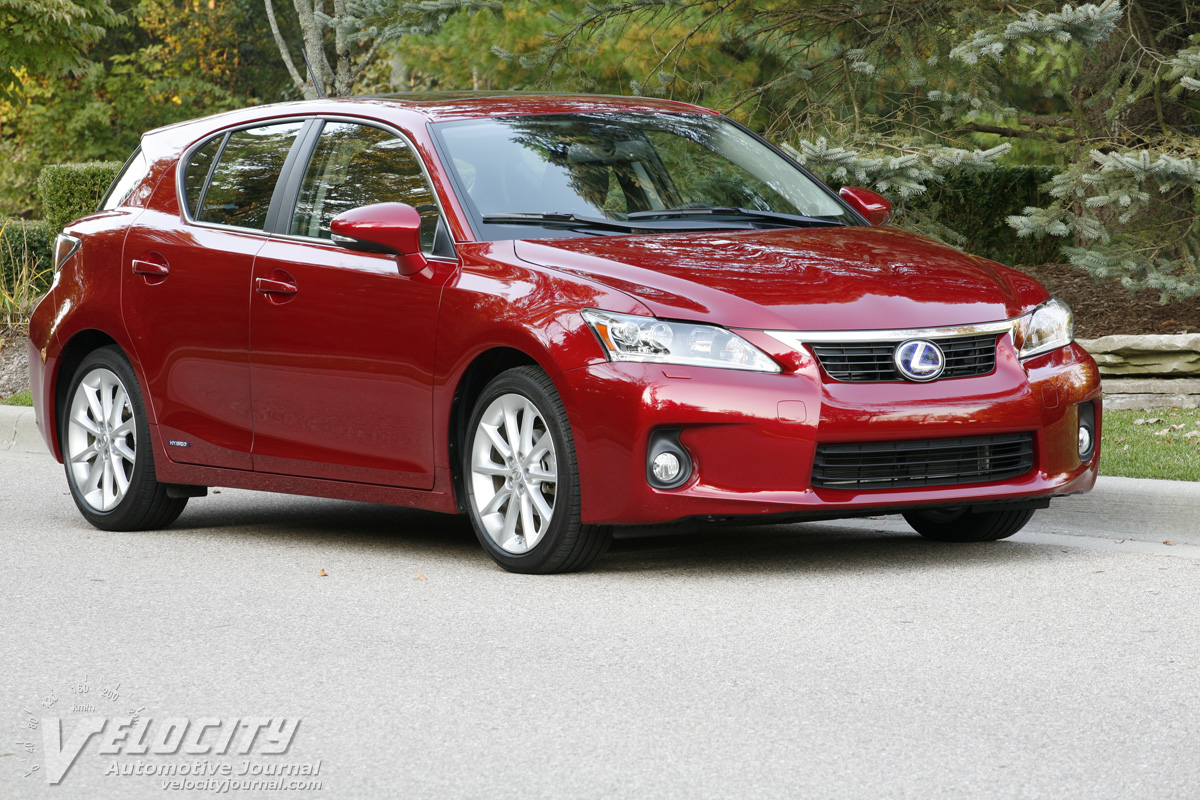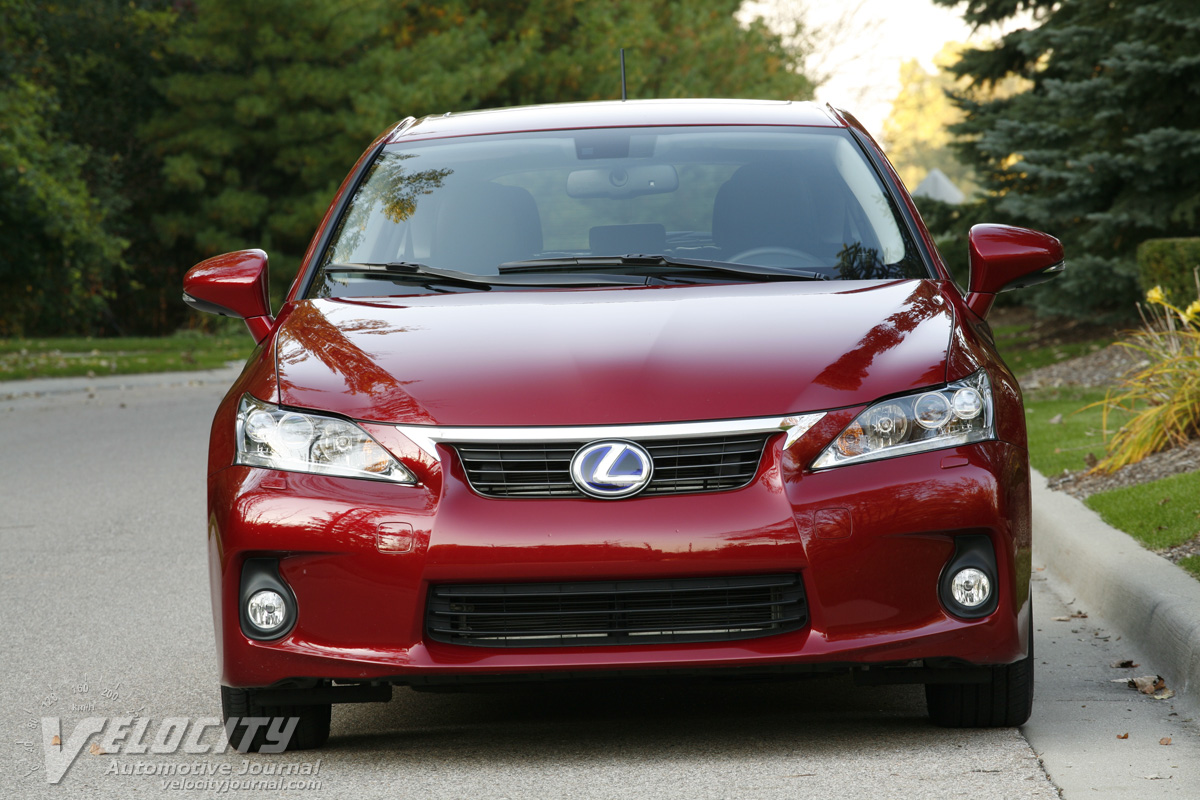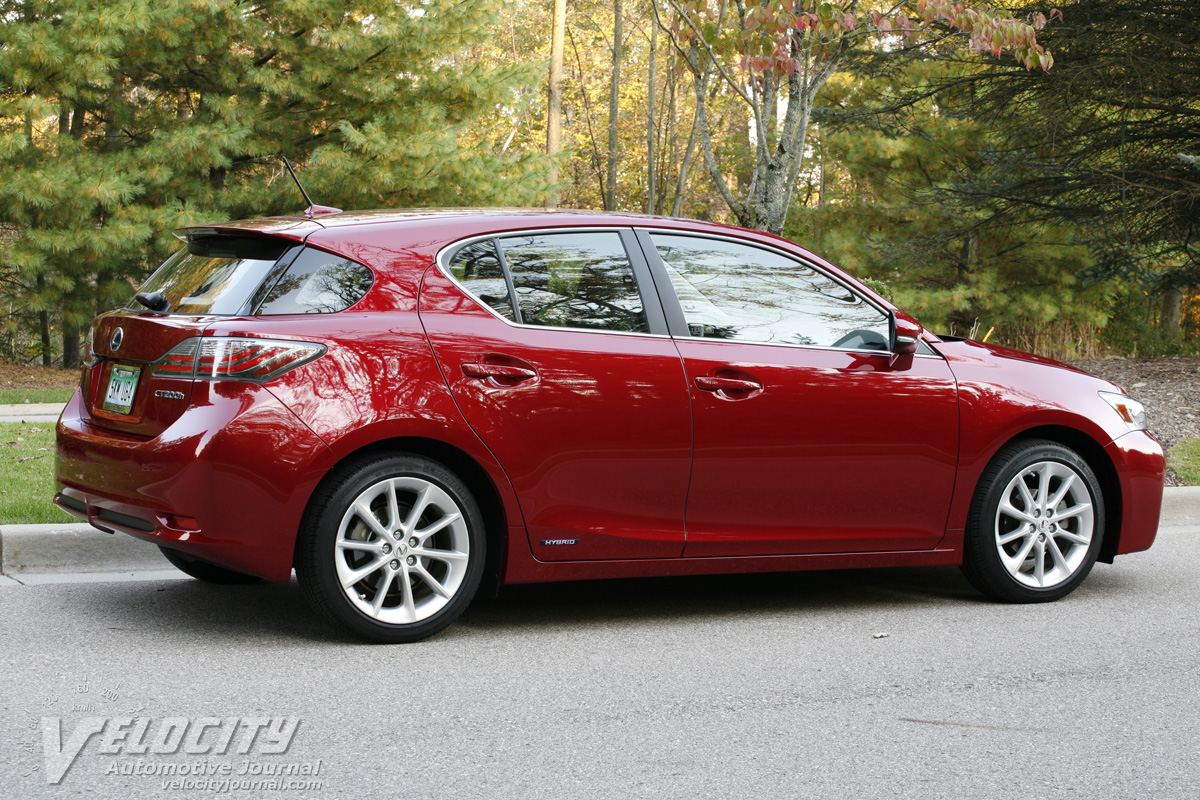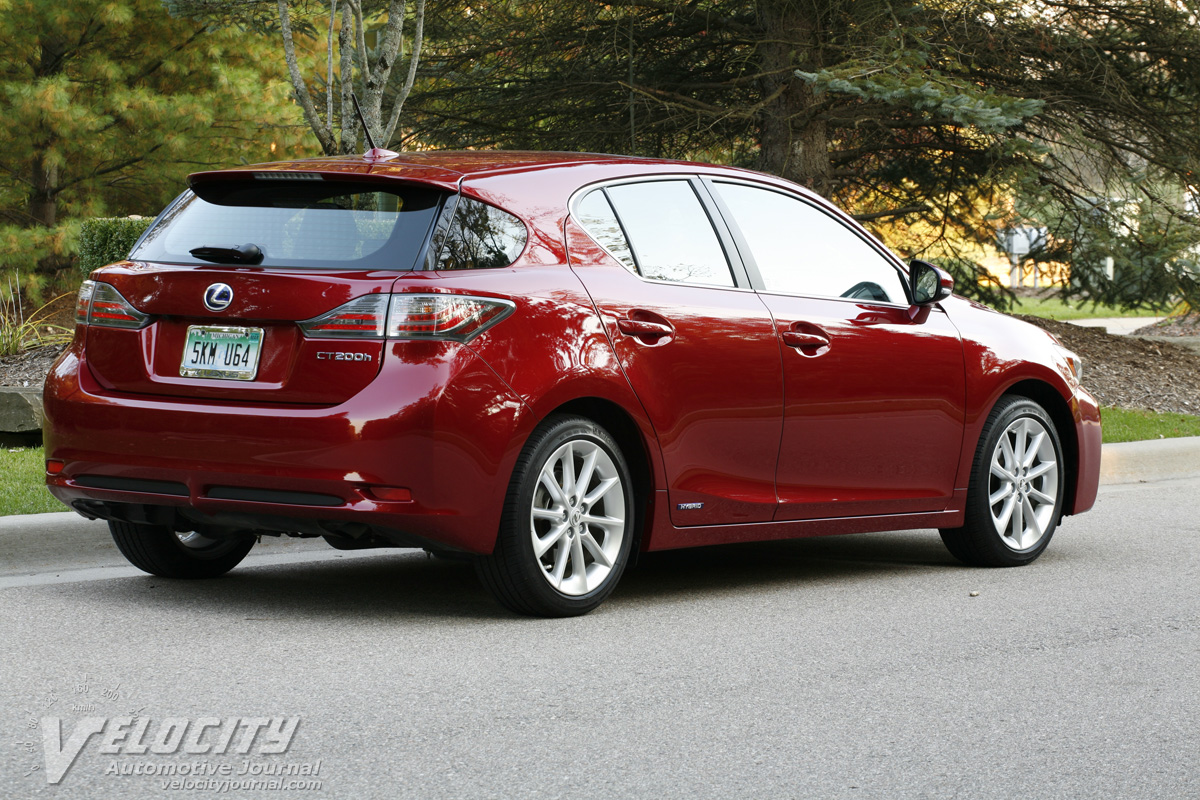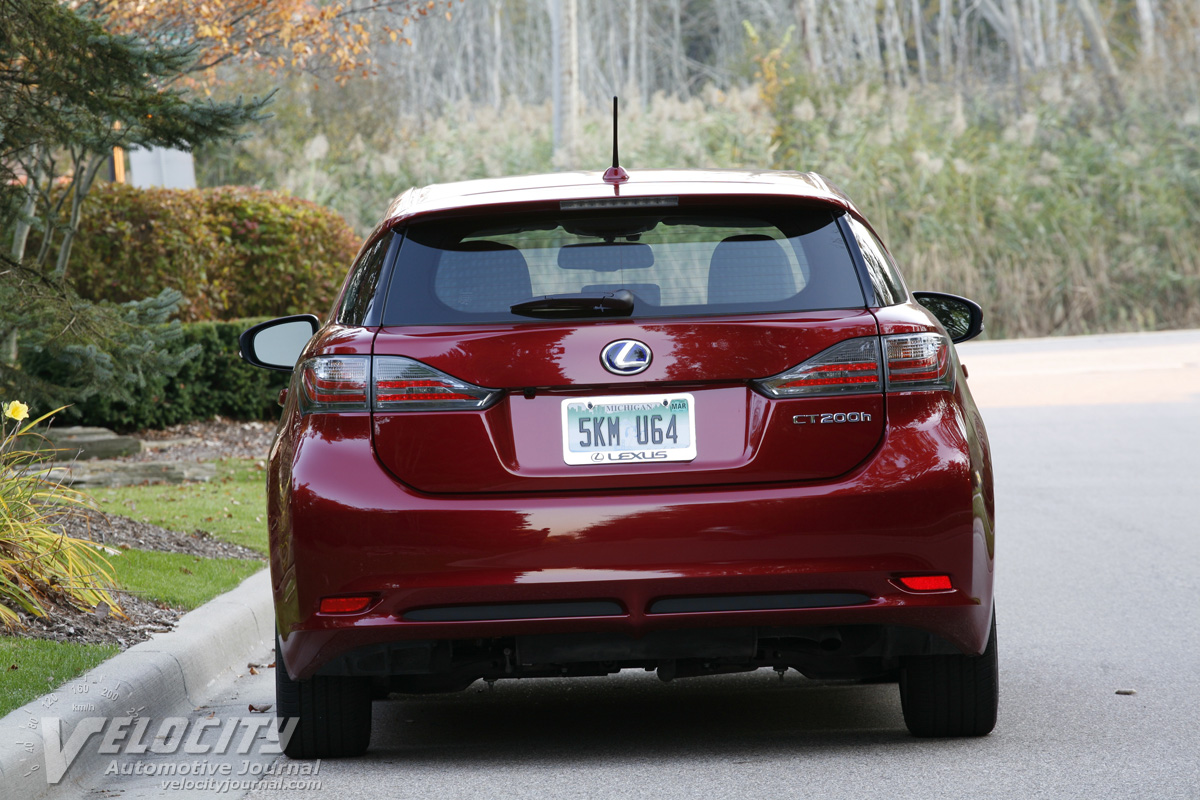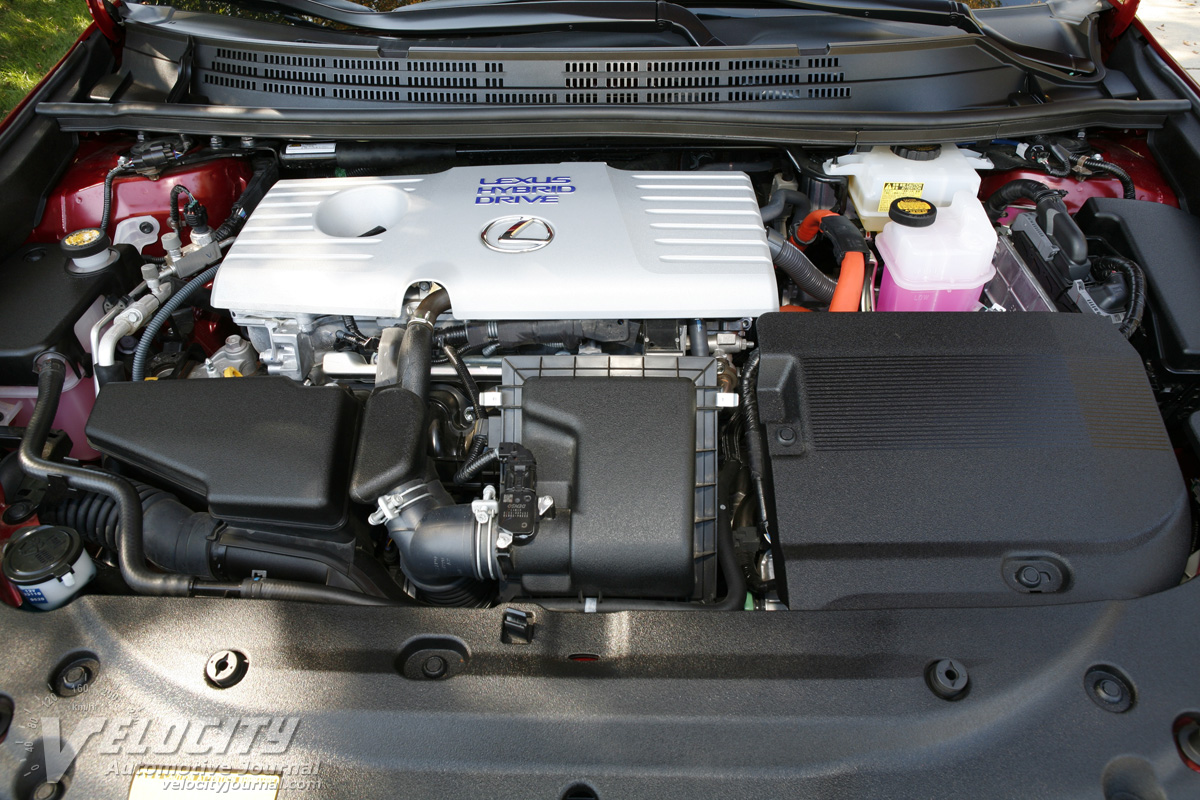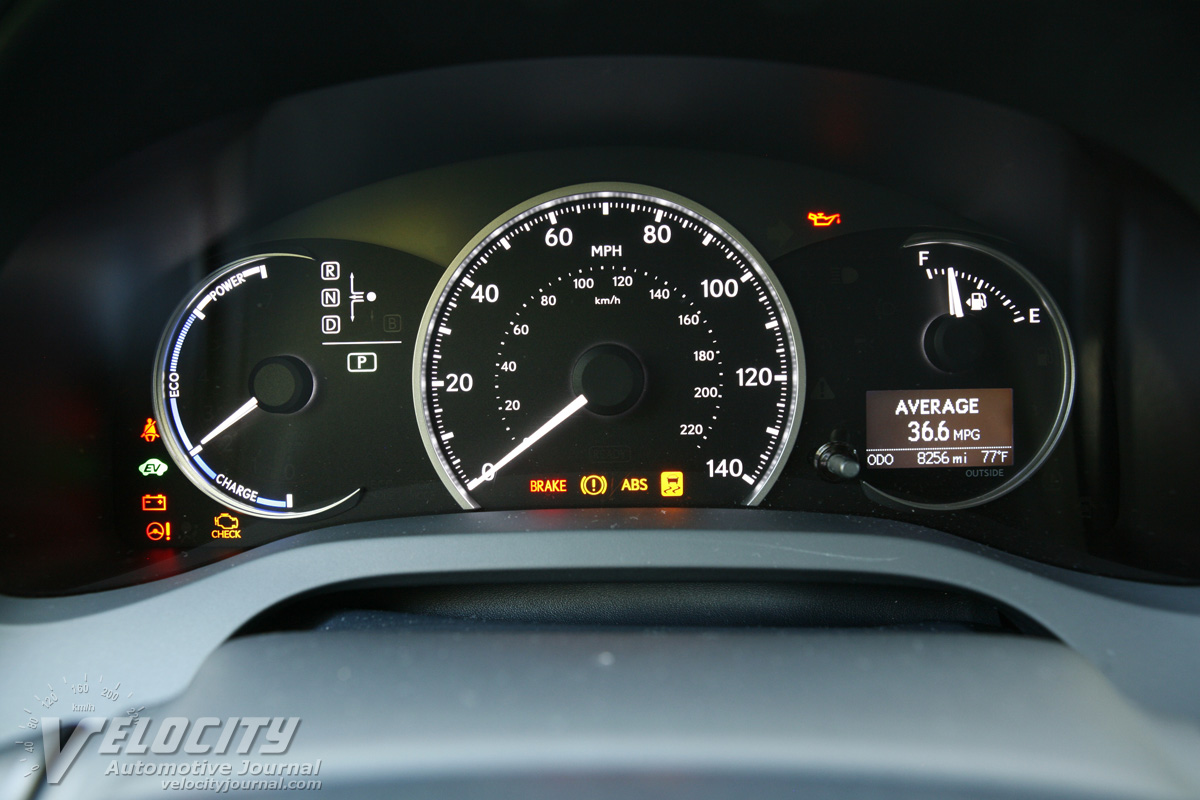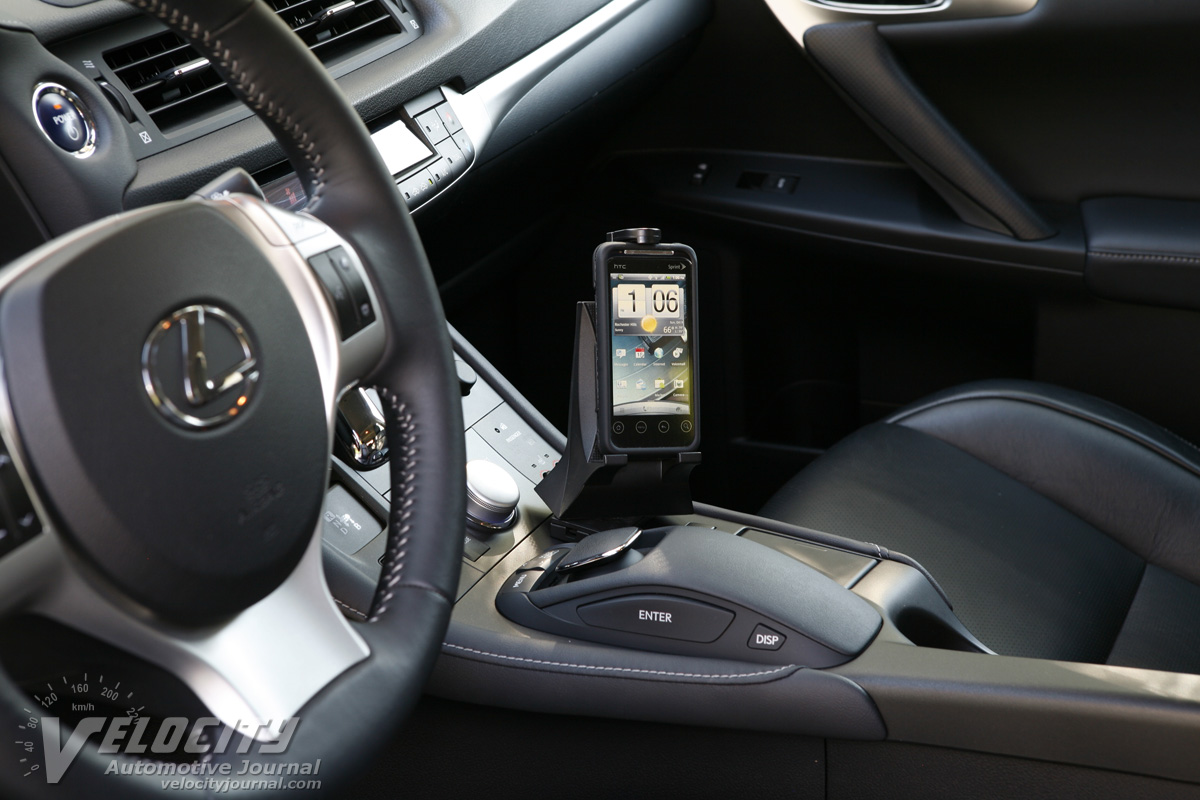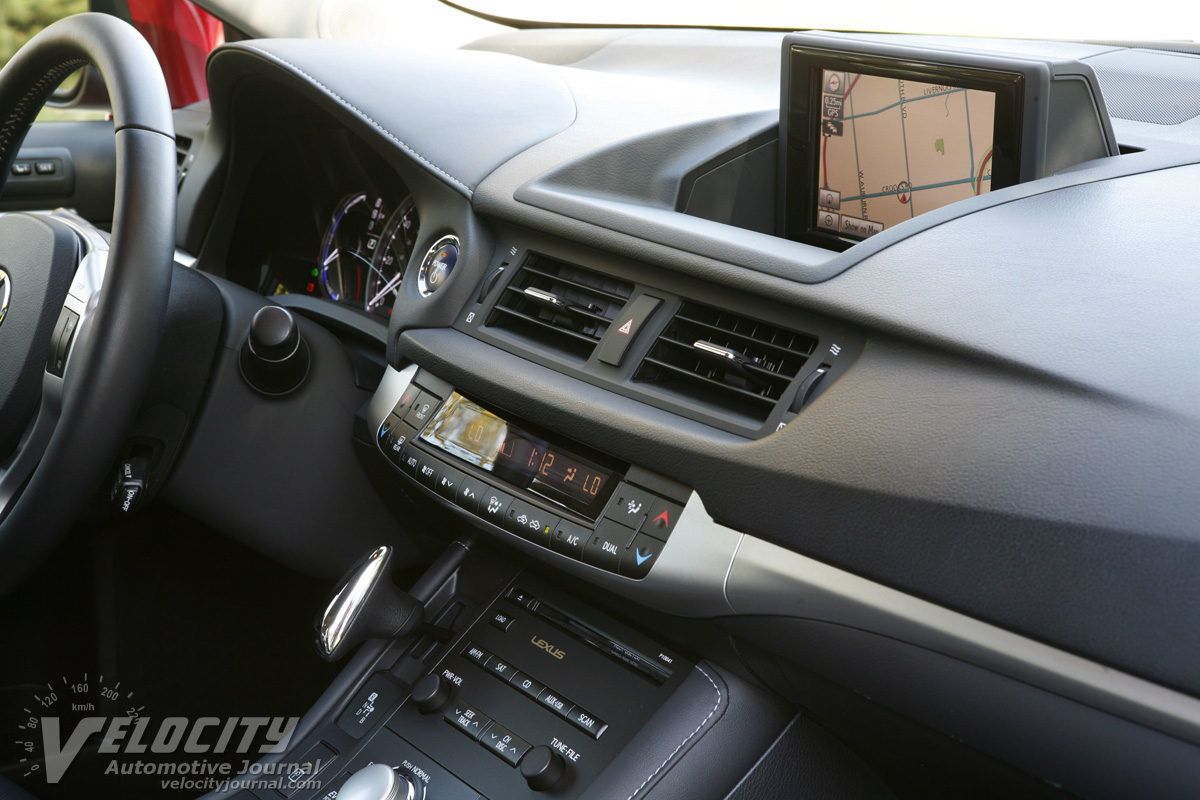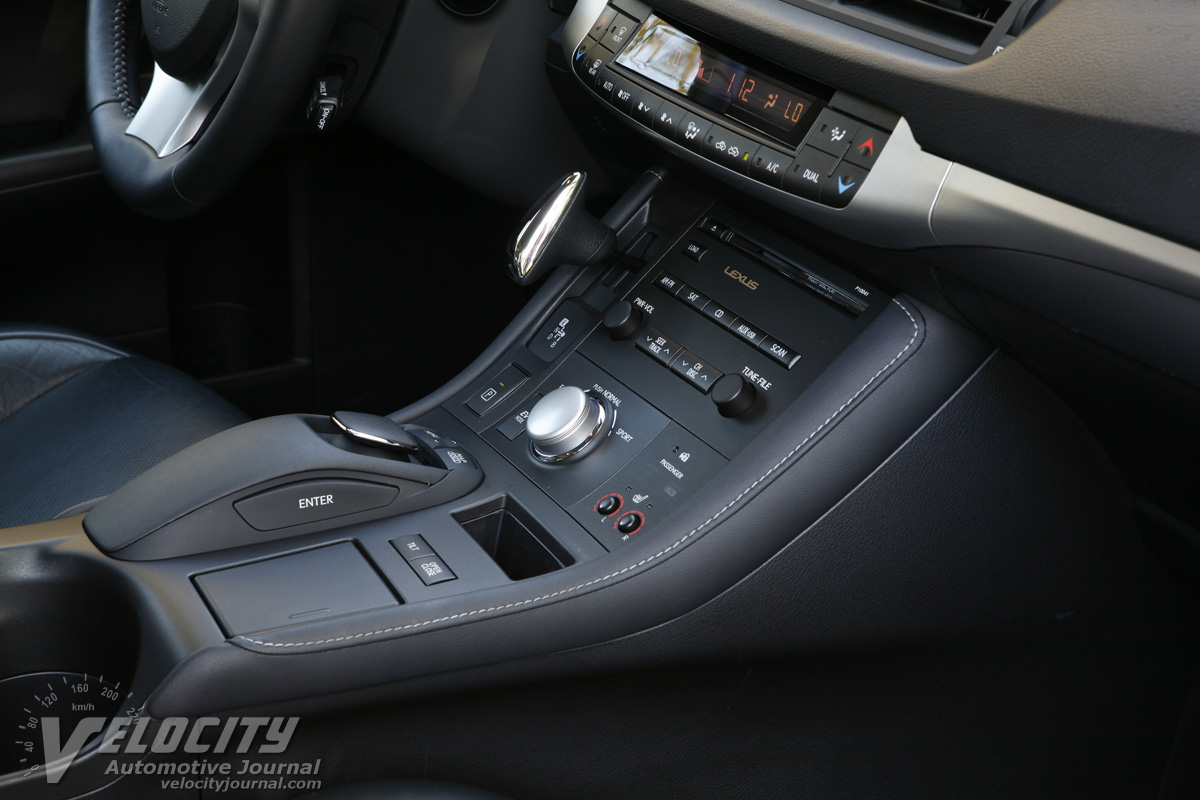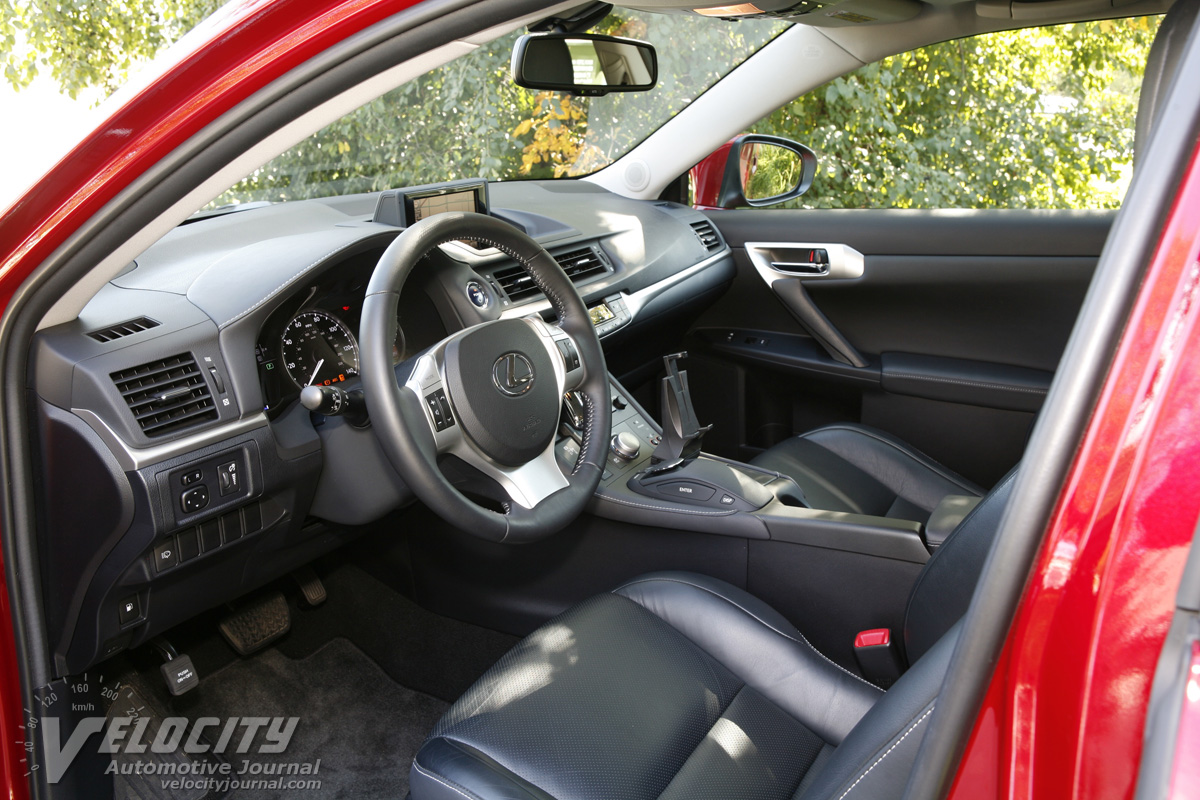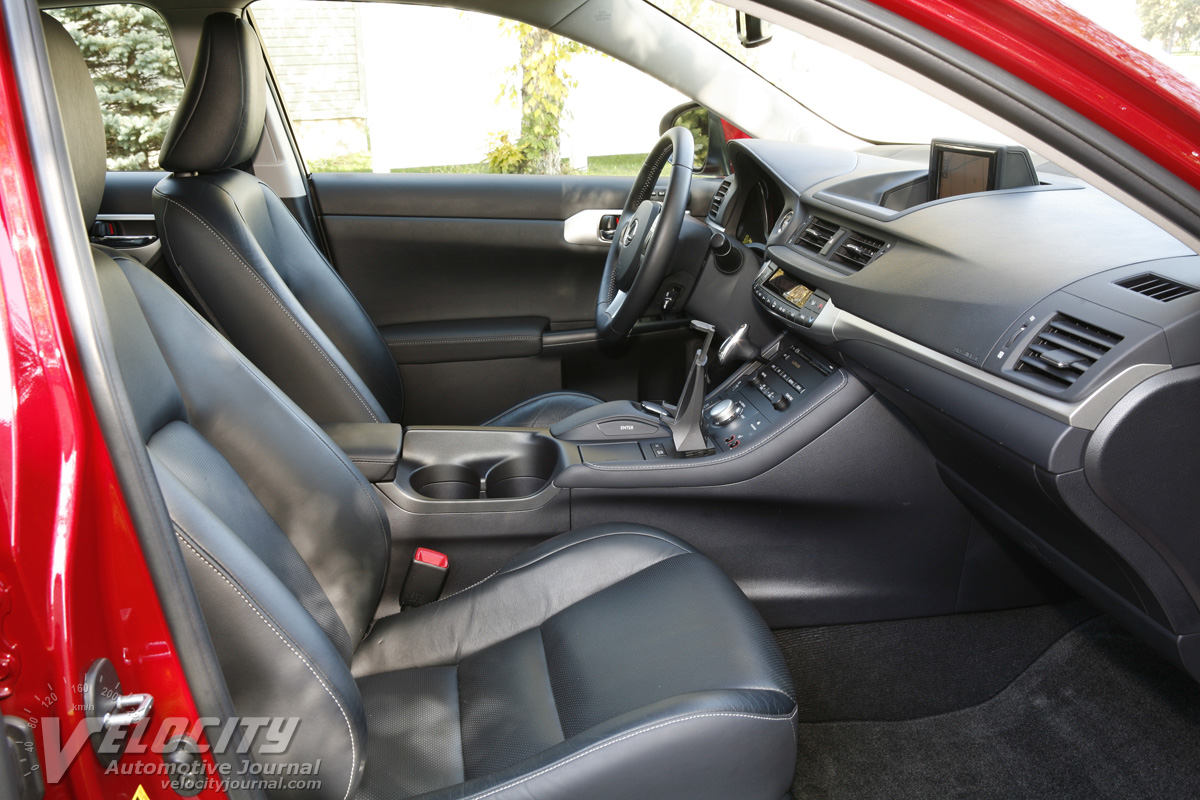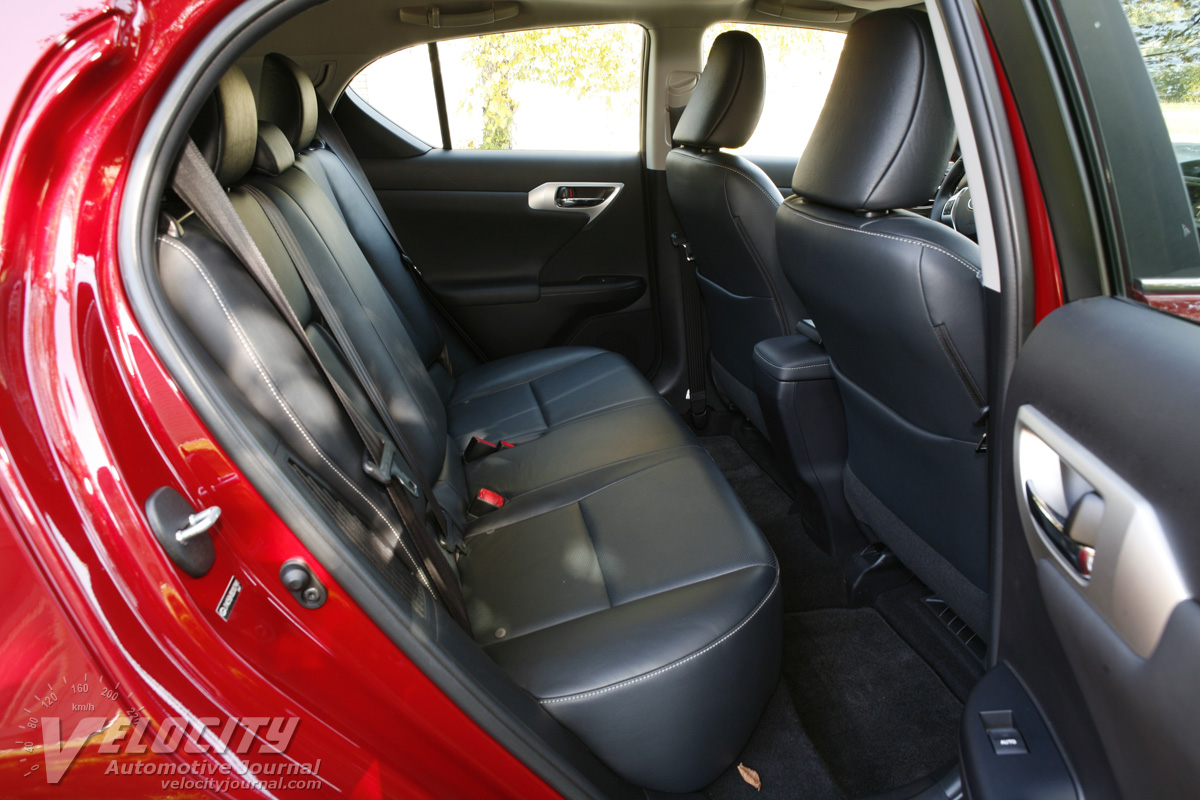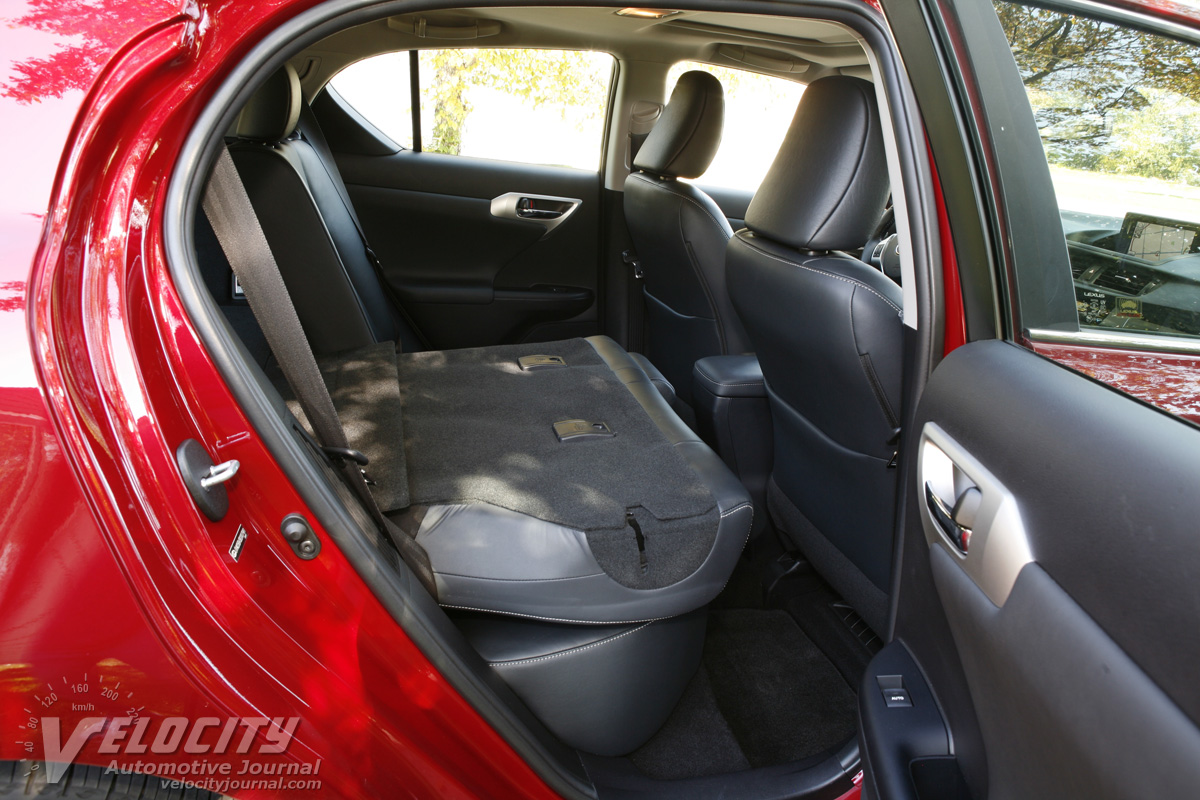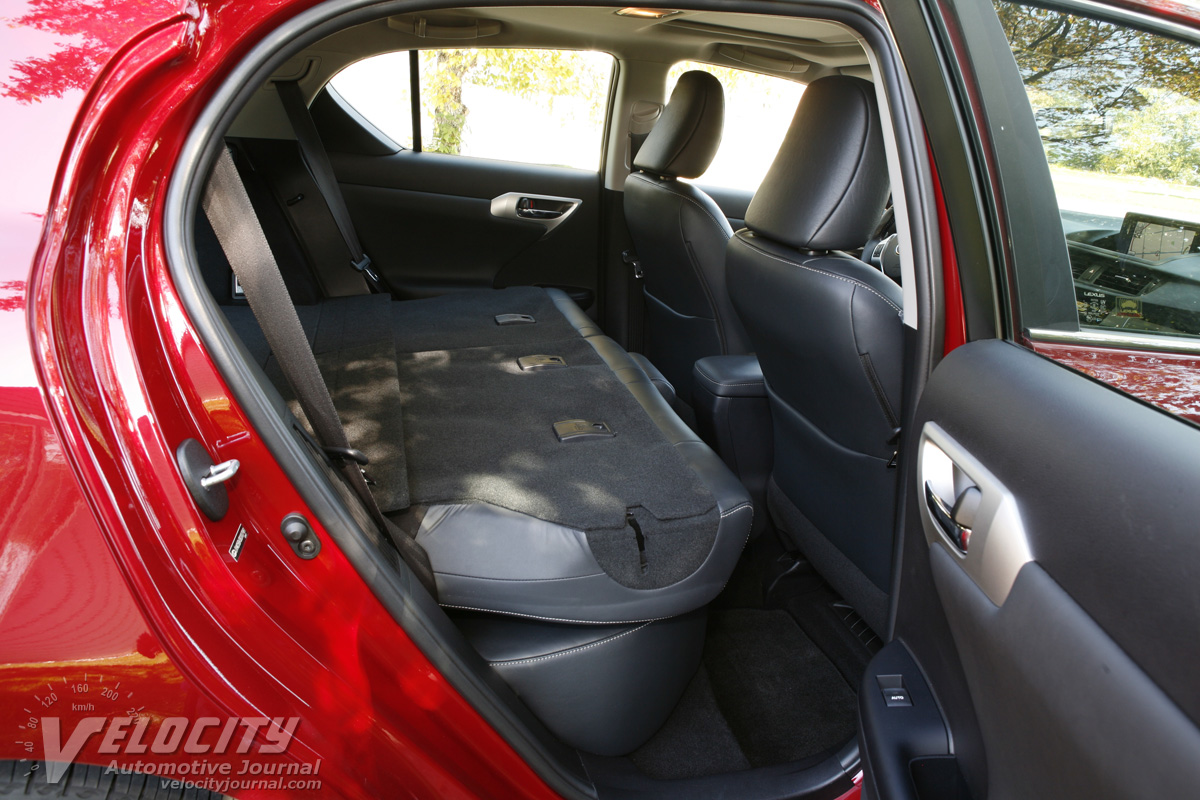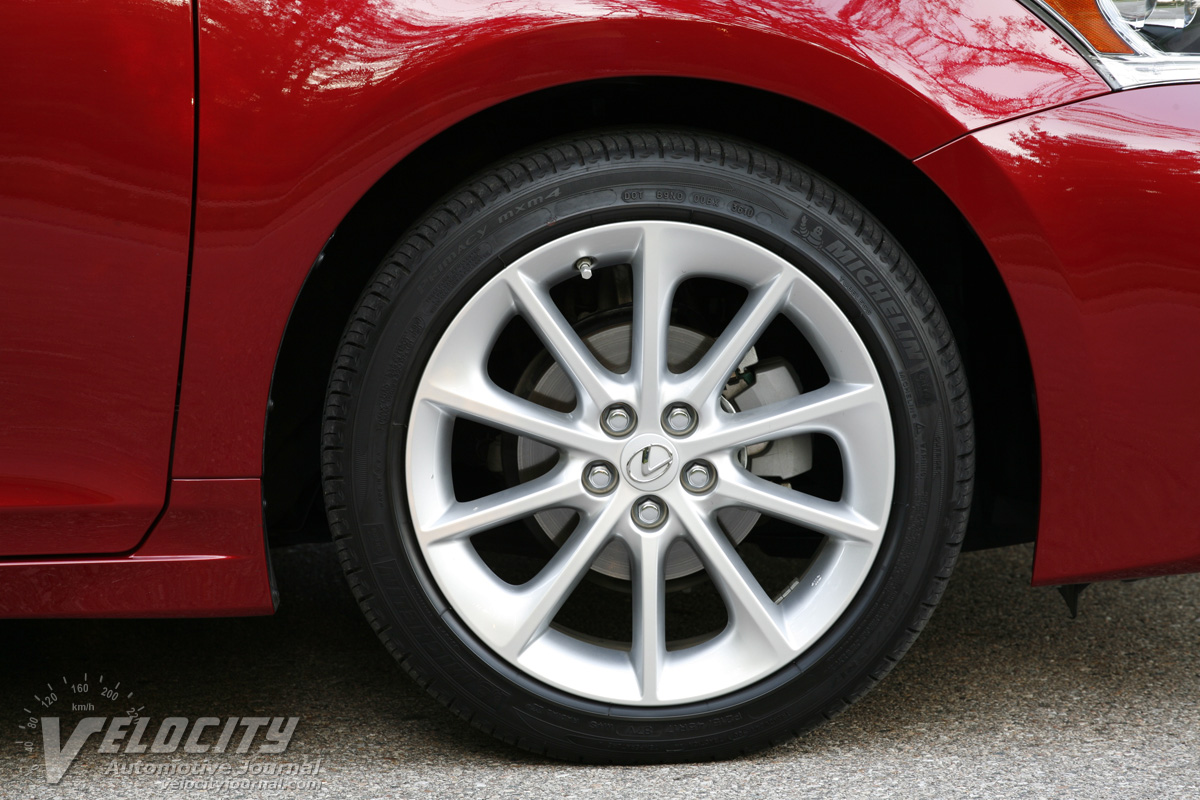2011 Lexus CT200h
11/02/2011
Shahed Hussain
Lexus offers a hybrid variant for most of its models, as well as a couple of hybrid-only cars. Of these, the HS250h is the affordable luxury hybrid, while the CT200h is its sporty counterpart. Both models are aimed at the tiny niche of customers who appreciate above average fuel economy in a compact package. The CT200h is the first 5-door hatchback from Lexus, and is also the entry model in the lineup. Similarly priced hybrids include the Ford Fusion, Hyundai Sonata, Kia Optima, and Toyota's own Camry. These midsize sedans offer greater interior space, although the CT200h achieves slightly higher EPA fuel economy numbers. Setting aside the hybrid powertrain, the Audi A3 TDI is the most directly comparable to the CT200h, with similar pricing and comparable highway fuel efficiency.
Lexus initially launched the CT Hybrid in two trim levels: CT200h ($29,120) and the better equipped CT200h Premium ($30,900). We drove the latter model, equipped with the Premium Audio Package ($1,100), LED Headlamps ($1,215), Leather Package ($1,330), Navigation System ($2,445), Cargo Net ($75), and Illuminated Door Sills ($299). Adding the delivery fee of $875 totaled up to an MSRP $38,239. Deleting the LED headlamps, navigation, and the illuminated door sills would slice a substantial $4,760 off the sticker price, while still retaining the leather seats and upgraded audio system.
For 2012, the base CT200h starts at $29,120 and the Premium is now priced at $31,250. A new F Sport package ($32,250) adds a special sport-tuned suspension and dark graphite painted alloy wheels. Lexus also introduced the F Sport Special Edition ($37,995) with builds on the F Sport model with 5-spoke alloy wheels, lowered springs and unique stabilizer bars for sharper handling.
Despite its compact exterior and status as the least expensive Lexus, the CT200h is equipped with superb front seats, upholstered in supple perforated leather. A 10-way power driver's seat with adjustable lumbar ensures a near perfect fit. Thigh and torso bolsters strike just the right balance of support and comfort. The front passenger only gets manual adjustments, but both front seats are heated. The standard moonroof limits headroom for occupants taller than 6 ft. Although the rear seats appear cramped, with limited thigh support, we found adequate space for two passengers, as long as they are less than 6 ft. tall. Luggage capacity with rear seats up is 14.3 cu. ft., but the 60/40 split seats fold flat to increase cargo volume considerably. Visibility through the backlight is limited by the rear seat headrests, but the optional Backup Monitor camera provides an unobstructed view directly behind the vehicle.
The CT200h is packed with technology, but Lexus has hidden the complexity of the sophisticated hybrid powertrain from the average consumer. The instrument panel appears deceptively normal, with a 140-MPH speedometer, a Hybrid gauge with Power/Eco/Charge zones, fuel gauge, and trip computer display. Notably missing is a coolant temperature gauge. The compact leather-wrapped steering wheel has controls for Bluetooth phone and audio. Buttons and knobs for the climate control and AM/FM/CD/satellite audio system are clearly marked and within easy reach. Console-mounted buttons adjust the angle of the optional navigation display, or can retract it into the dashboard. Instead of the typical touchscreen, Lexus uses a mini-joystick to control navigation functions. Although the joystick eliminates the distraction of reaching forward to program the navigation system, we still had to monitor the screen closely while manipulating the icons on the display. After a few days, we became acclimated to the joystick navigation controls, but it was still too easy to overshoot desired menu options. We think that a conventional touchscreen is faster and more intuitive than the admittedly innovative joystick system. Notebook computers and mobile phones can be charged via a 120V or USB power outlet located in the center console. Lexus even includes a removable adjustable mount for smartphones. Other amenities include a keyless entry fob that automatically unlocks doors and turns on exterior lamps when the owner approaches the vehicle.
Lexus borrowed the hybrid powertrain in the CT200h from the Prius. The 1.8L Atkinson-cycle 2ZR-FXE engine develops 98-bhp @ 5,200 RPM and 105 lb-ft. of torque @ 4,000 RPM. Combined with the 80-bhp/153 lb.-ft. DC motor, total powertrain output is 134-bhp, channeled through an electronically controlled CVT (Continuously Variable Transmission). The 201.6V nickel metal hydride battery pack consists of 168 1.2V cells, arranged in 28 modules. According to Lexus, the CT200h will accelerate from 0-60 MPH in 9.8 seconds on its way to a 113 MPH top speed. The EPA fuel economy rating of 43/40 MPG (city/hwy.) is reasonable based on our experience. We averaged about 38 MPG overall in mixed urban and highway driving, but occasionally topped 40 MPG.
With a curb weight of 3,146 lbs., the CT200h is commendably light for a hybrid. An aluminum hood and rear hatch help reduce the weight penalty of the battery pack, which is mounted over the rear axle. Fuel capacity is only 11.9 gallons, limited by the space consumed by the battery pack.
The CT200h suspension consists of the commonplace MacPherson struts, coil springs, and stabilizer bar in front, with double wishbones, trailing arm, coil springs, dampers, and stabilizer bar in the rear. Aluminum steering knuckles and stabilizer bar links reduce unsprung weight. Lexus replaced a conventional strut tower brace with a front lateral damper; another lateral damper does similar duty in the rear. The dampers absorb torsional forces and high frequency vibrations, resulting in reduced body flex and improved ride comfort.
Starting the CT200h is somewhat deliberate process. First, press the brake pedal and then push the dash-mounted Power button; the amber LED changes to green to indicate the powertrain is ready. Guide the stubby chrome-topped shifter into "R" or "D", gently depress the throttle and the CT200h glides away in EV mode (electric motor drive) for short distances up to 30 MPH, depending on the battery charge level. Pure electric mode can be manually engaged via the EV Mode button on the center console. Mash the throttle, and the 1.8L gasoline engine cranks to life and couples with the electric motor for faster acceleration.
Controlling the hybrid powertrain is a center console knob with three modes: Normal, Eco, and Sport. For optimal fuel economy, press the console knob to engage the Eco mode, or twist the knob to the right to shift into Sport mode. The default powertrain setting is Normal mode, with the Hybrid gauge encouraging efficient driving habits. Switching to Sport mode transforms the instrument panel ambient lighting from blue to red; the Hybrid gauge fades out to be replaced by a 7,000 RPM tachometer.
Accelerating from stoplights in Eco mode, the CT200h felt too sluggish for typical city driving. When cruising at 40-50 MPH the Eco mode will squeeze out a few extra miles per gallon. We found ourselves driving almost exclusively in Sport mode, which mostly remedied the sluggish throttle response of the more fuel-efficient settings. At full throttle, the tachometer needle arcs to 4,000 RPM as the CVT maintains maximum torque output, accompanied by an annoying engine drone that penetrates into the passenger compartment. Below 4,000 RPM, the 1.8L inline-4 is commendably refined, but this engine's mission is maximum efficiency, not high rev thrills.
The electrically-assisted power steering provides a nice balance of feedback and isolation. Steering effort is moderately heavy, allowing excellent stability at speed for this relatively compact car. Brakes are 4-wheel discs: 10.0-in. diameter vented front rotors and 10.9-in. diameter rear rotors. During deceleration, the regenerative brake system converts wheel rotation into electricity, recharging the battery back. The additional retardation from the regenerative brakes allows Lexus to use smaller, lighter front disc rotors. ABS, VSC (Vehicle Stability Control), and traction control are standard. Alloy wheels (17" x 7") are shod with P215/45R17 Michelin Primacy MXM4 tires.
Lexus promises sporty handling, but the chassis doesn't quite deliver: the front-drive powertrain and nose-heavy weight distribution ensure that the CT200h consistently understeers in normal driving. Accelerating around cloverleaf highway onramps, the chassis allows greater body roll than we expected for a car promising above average driving dynamics. Overall ride comfort is acceptable for long distance touring, but the tightly damped suspension feels jittery over broken pavement. Lexus has apparently conceded that the standard suspension tuning may not satisfy enthusiasts, adding the previously mentioned F Sport package, and an F Sport Special Edition to the CT model lineup.
The CT200h appeals to narrow niche, specifically, customers searching for a premium, fuel-efficient compact hatchback. In Europe, this segment is bursting with entries (albeit non-hybrid) from nearly all major manufacturers, but in the US this Lexus is likely to have a limited audience. If Lexus had considered offering a CT with a 200-bhp inline-4 mated to a 6-speed gearbox, this sport hatchback could grab sales from the Audi A3 and Mini Cooper. But in its current incarnation the CT200h answers a question few have asked.

